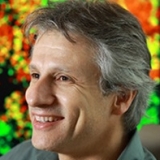Molecular Mechanisms
The first goal of the Center is to understand the fundamental molecular mechanisms of stem cell proliferation and differentiation using human embryonic stem cells, adult stem cells, and stem cells in simpler organisms that are useful models for the study of developmental biology. Computational methods and systems biology approaches will be applied to understand intricate networks of genes and proteins.















